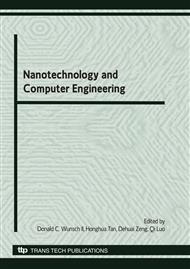[1]
C.F. Yao, D.H. Zhang, K. Bu, et al. Collaborative Manufacturing Task Information Model and Its Model Building Method for Complex Parts. Computer Integrated Manufacturing Systems, 2009, 15(1): 670-675.
Google Scholar
[2]
X.H. Dong, X.H. Xu, L. Tian, et al. Information Modeling for Cooperative Assembly Design. Journal of Tsinghua University: Science & Technology, 2004, 44 (5): 620-624.
Google Scholar
[3]
M. Zanker, D. Jannach, S. Gordea, et al. Comparing Recommendation Strategies in a Commercial Context. IEEE Intelligent Systems, 2007, 22 (3): 69-73.
DOI: 10.1109/mis.2007.49
Google Scholar
[4]
L. Chen, Z.J. Song, and L. Feng. Internet-enabled Real-time Collaborative Assembly Modeling via an E-assembly System: Status and Promise. Computer-Aided Design, 2004, 6(9): 835-847.
DOI: 10.1016/j.cad.2003.09.010
Google Scholar
[5]
C. Zhang. Service Recommendation with Adaptive User Interests Modeling. Lecture Notes in Computer Science, 2007, 4882: 265-270.
DOI: 10.1007/978-3-540-77115-9_27
Google Scholar
[6]
D. Rezende, J. Lucas, V.B. Pereira, et al. Building a Personal Knowledge Recommendation System using Agents, Learning Ontologies and Web mining, In: Proceedings of the 10th International Conference on Computer Supported Cooperative Work in Design, CSCWD 2006. Washington, D. C., USA: IEEE, 2006: 147-152.
DOI: 10.1109/cscwd.2006.253225
Google Scholar
[7]
J. Buckley Multiple Goal Non-cooperative Conflicts under Uncertainty: A fuzzy Set Approach. Fuzzy Sets and Systems, 1984, 13(2): 107-124.
DOI: 10.1016/0165-0114(84)90012-5
Google Scholar
[8]
W.L. Du and Z.J. Zhan. Using Randomized Response Techniques for Privacy-Preserving Data Mining. In: Proceedings of the 9th ACM SIGKDD International Conference on Knowledge Discovery and Data Mining, Washington, D.C., USA, August24-27, (2003).
DOI: 10.1145/956750.956810
Google Scholar
[9]
Y. Lindell and B. Pinkas. Privacy-preserving Data Mining. In Advances in Cryptology. Crypto2000. 36 -54.
Google Scholar
[10]
M. Kantarcioglu and C. Clifton. Privacy-Preserving Distributed Mining of Association Rules on Horizontally Partitioned Data. In: Proceedings of ACM SIGKDD Workshop on Research Issues in Data Mining and knowledge Discovery, (2002).
DOI: 10.1145/775047.775142
Google Scholar
[11]
H.Q. Li, T.J. Lu. Dynamic Message Delivery System Based on Context Awareness. Transactions of Beijing Institute of Technology, 2008, 28(5): 464-466.
Google Scholar


